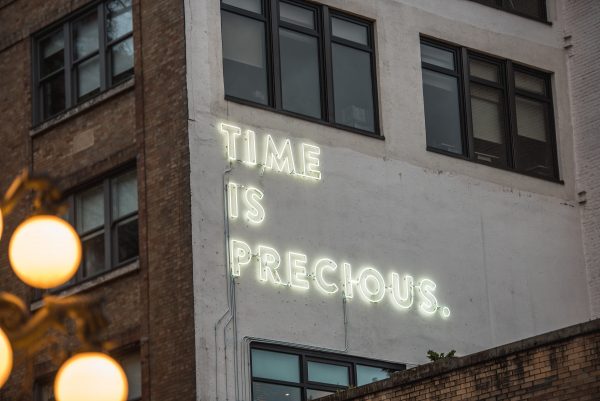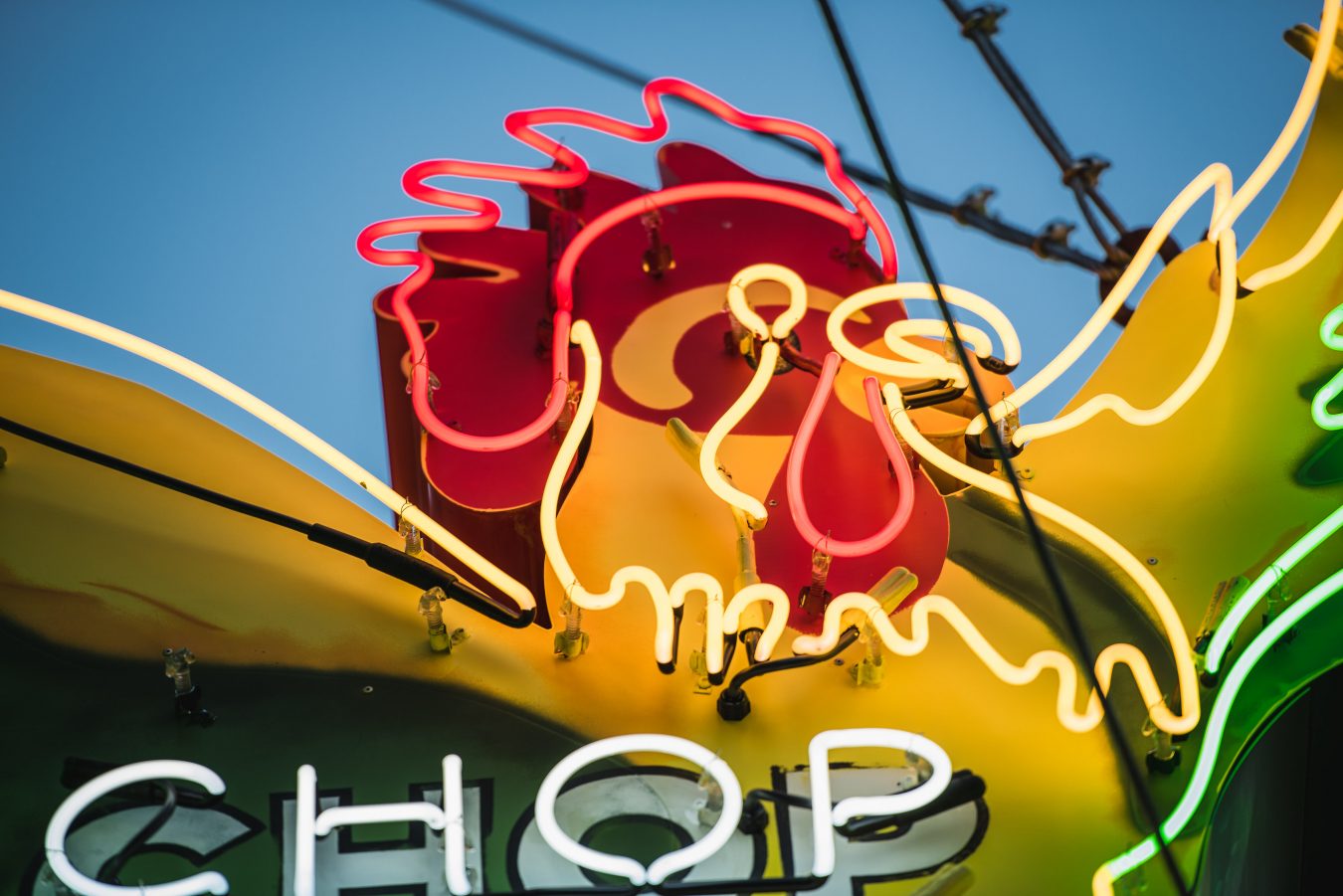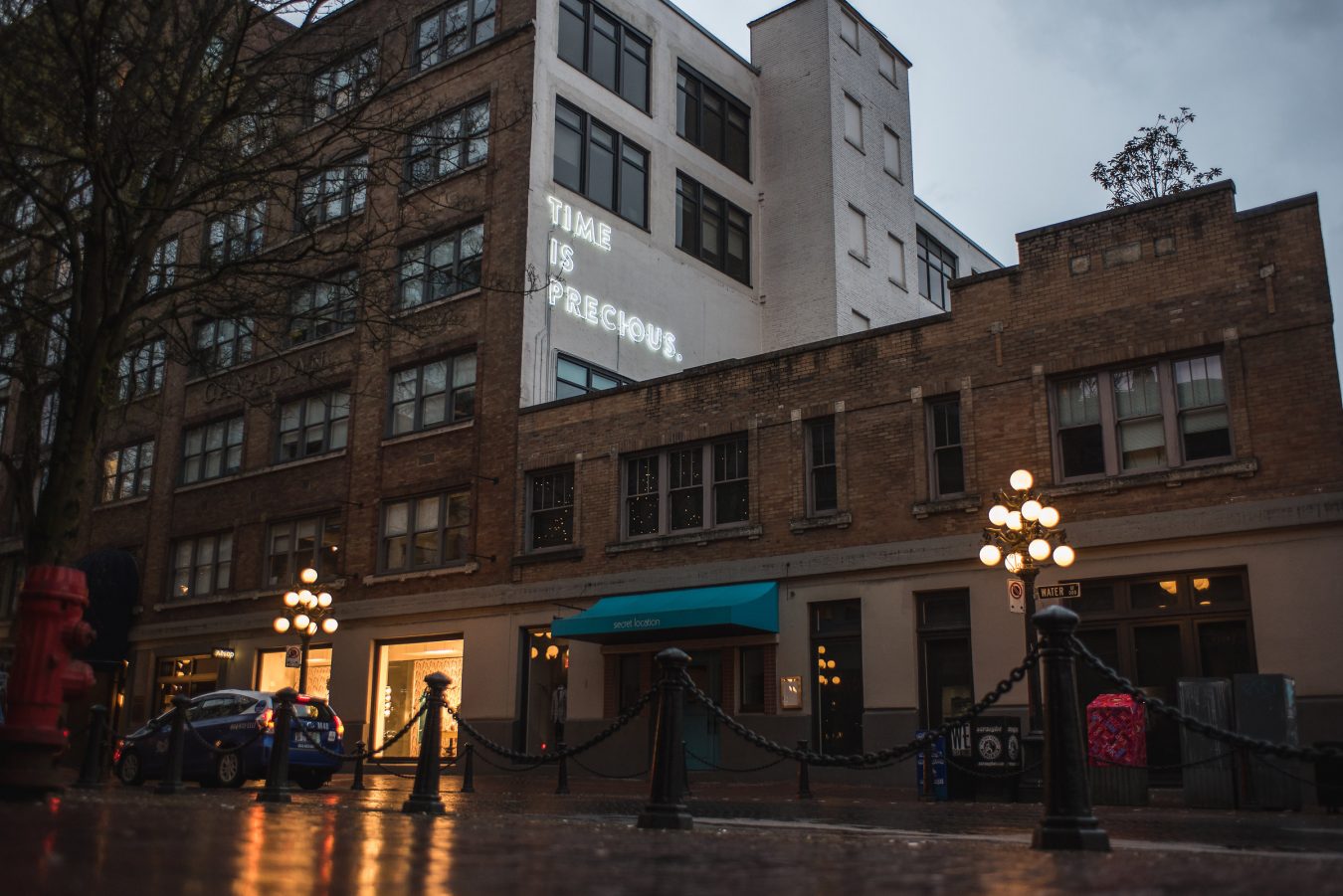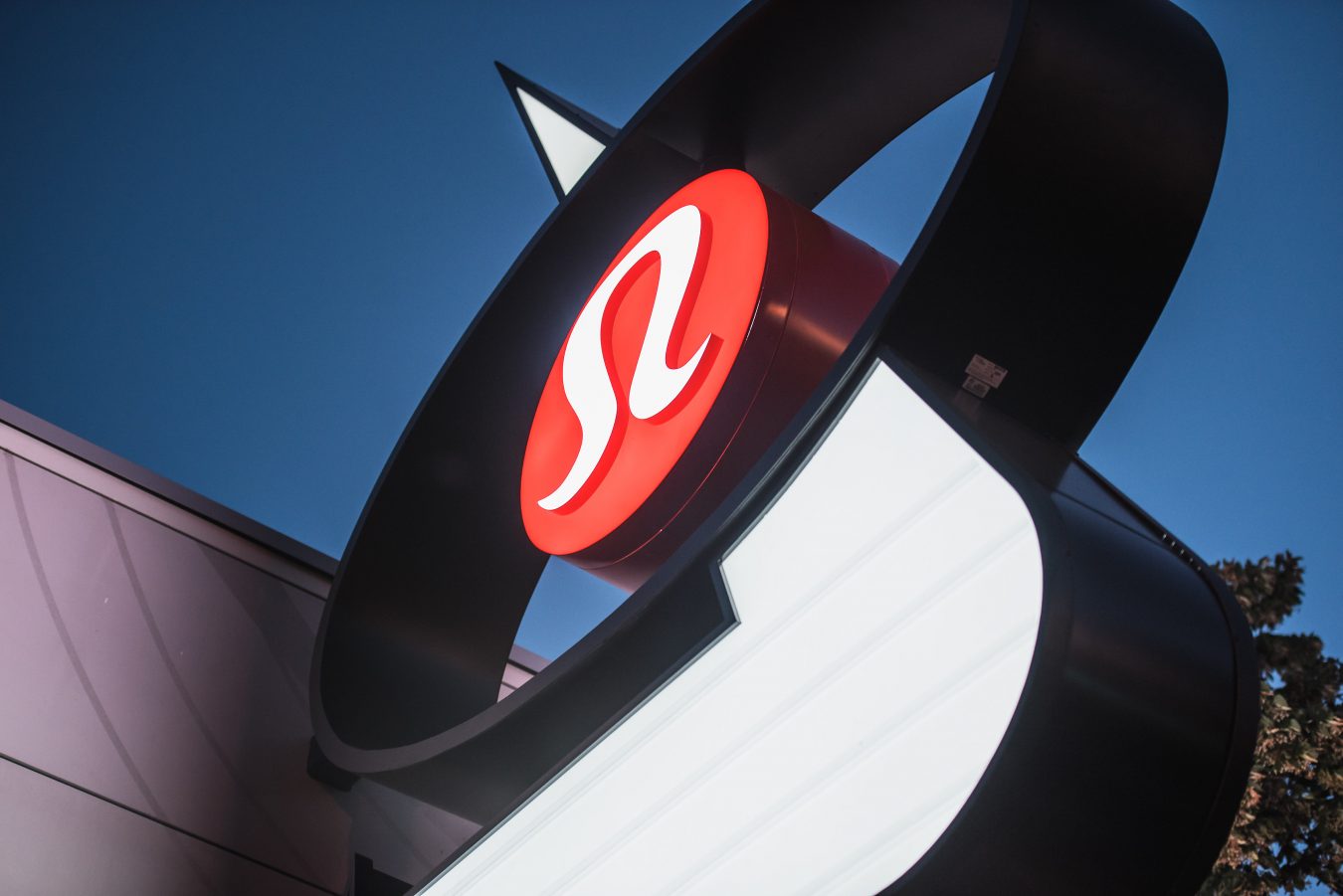Time can often seem maddeningly fluid—especially if your job is to capture it in a glass tube.
Troy Hibbs oversees his shop, TDH Experiential Fabricators, where his brother Andrew is a neon bender: an abstract vocation by today’s standards, but not so uncommon in the 1950s. For a decade, Vancouver saw 19,000 signs cast their glow across the city, the wet downtown streets reflecting colourful fluorescent lights. Some thought the effect diminished Vancouver’s natural beauty, which prompted an anti-neon crusade in the late 1960s. In the years to come, signs were systematically dismantled and storefronts were darkened.
Among those lost was the Sai Woo rooster, with its broad chest and open wings, that greeted patrons outside the popular Chinatown restaurant. The chop suey house is mentioned in the infamous murder trial of the Hughes Gang as the place where the four boys went to drink a bottle of rum after killing Yoshi Uno in 1942.
When Sai Woo closed its doors in 1959, the neon sign was presumably destroyed shortly thereafter. Committed to restoring the restaurant to its former glory, current owner Salli Pateman (who brought the establishment back to life and injected it with contemporary flair) was intent on resurrecting the glowing rooster. She raised the funds on Kickstarter and hired Hibbs and his team to create a replica, aged as if it had never disappeared from its perch. Their only point of reference was two seconds of archival film from a Chinatown parade in 1958, when the camera pans up to the sign. “The footage was grainy, so we had to interpret not only what we thought it looked like then, but what it would have looked like now,” says Hibbs as he tours through his Surrey studio. “We went through different aging techniques, like where the paint might have been fading because it had been sitting in the sun, or where water would have pooled to create rust; had it been standing up the whole time, the neon could have arced and had little burn spots; if the sign had been repaired, maybe the truck hit the side of the sign and there was a bit of a dent. There is no manual for the right or wrong way to age something, so you get to create stories.”

The process of forming a neon sign is the same today as it was when it was invented more than 100 years ago, in 1910. Andrew Hibbs uses his bare hands to hold the glass tube over a flame—a process so delicate it has to be done without gloves. By simultaneously breathing through a hose and providing airflow, he keeps the tube from collapsing while he shapes it. “When someone is looking at a neon sign, there is an appreciation for it because it has a human element to it,” Troy says. “It’s more of an art installation.”
At the height of Vancouver’s neon era, Chinatown’s streets were a hypnotic array of colour and light. Sai Woo opened as a restaurant in 1925, and today, thanks to a few people dedicated to its history, it looks nearly identical to what it once was. “When we drove the finished sign to the restaurant, it was exposed in the trailer, so you could see it coming up the street. Salli was getting quite emotional when it was being installed,” says Hibbs, whose other projects include signs for Bao Bei, Virtuous Pie, Kit and Ace, Telus Garden, and Juniper. “It’s not about trying to overpower the area with neon, but bringing the life back to it. It’s a nod to what was there before.”
To better understand the fluidity of time, we compartmentalize it in three stages: past, present, and future. A neon sign is the chance to consider all three at once.













